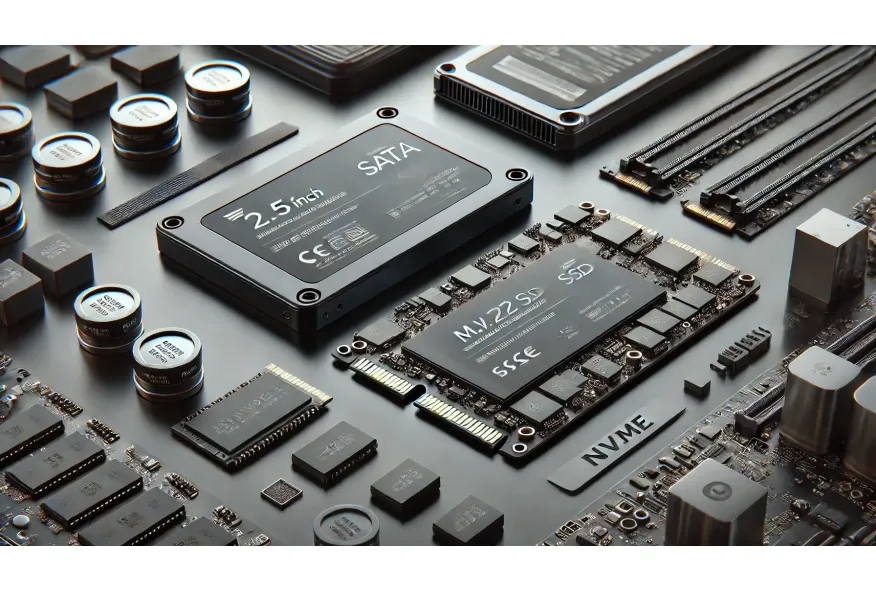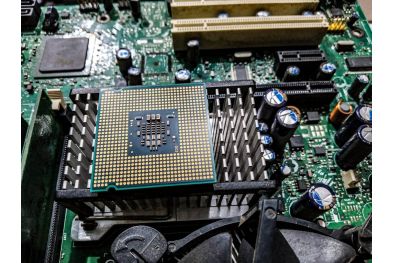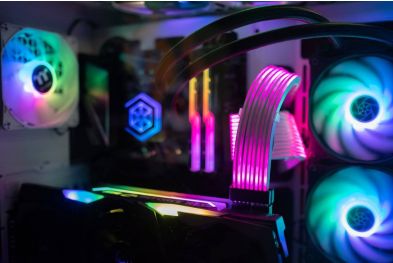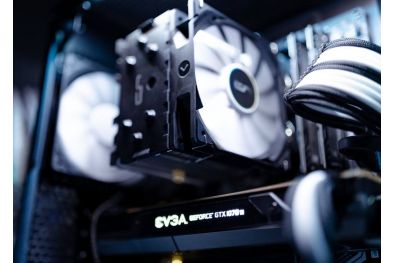What’s the Difference Between SATA SSD and NVMe SSD?
Understanding the Evolution of Storage: SATA SSD vs NVMe SSD
When upgrading your PC’s storage, choosing the right type of SSD can significantly impact performance. Two of the most common options are SATA SSDs and NVMe SSDs — both offering faster speeds compared to traditional hard drives, but with significant differences in how they work and perform. In this guide, we’ll explore the key differences between SATA SSD and NVMe SSD to help you choose the best option for your build.
What is a SATA SSD?
SATA SSD refers to Solid State Drives that use the Serial ATA (SATA) interface. SATA is the same connection type used by traditional hard disk drives (HDDs), meaning SATA SSDs are highly compatible with older and newer systems alike.
Key Features of SATA SSDs
- Interface: SATA III (up to 6 Gbps)
- Form Factors: 2.5-inch, mSATA, M.2 (with SATA protocol)
- Speed: Sequential read/write speeds typically up to 550 MB/s
- Compatibility: Works with nearly all desktops and laptops with SATA ports
- Cost: Generally cheaper than NVMe
What is an NVMe SSD?
NVMe stands for Non-Volatile Memory Express, a protocol designed specifically for flash storage. NVMe SSDs connect directly to the PCIe (Peripheral Component Interconnect Express) bus, offering much higher bandwidth compared to SATA.
Key Features of NVMe SSDs
- Interface: PCIe (usually PCIe 3.0, 4.0, or even 5.0)
- Form Factors: Most commonly M.2, but also available in U.2 and PCIe add-in cards
- Speed: Sequential read/write speeds ranging from 2000 MB/s to over 7000 MB/s (depending on PCIe generation)
- Compatibility: Requires a motherboard with an M.2 NVMe slot or compatible PCIe slot
- Cost: Typically more expensive than SATA SSD
Speed Comparison: Real-World Differences
The biggest advantage of NVMe over SATA is speed.
| Type | Read Speed | Write Speed |
|---|---|---|
| SATA SSD | Up to 550 MB/s | Up to 520 MB/s |
| NVMe SSD (PCIe 3.0) | Up to 3500 MB/s | Up to 3000 MB/s |
| NVMe SSD (PCIe 4.0) | Up to 7000 MB/s | Up to 6000 MB/s |
For tasks like booting Windows, loading games, or transferring large files, NVMe is significantly faster. This speed difference is particularly noticeable in professional workloads such as video editing, 3D rendering, and large data analysis.
Performance in Daily Use
For Gamers
If you are a gamer, the loading times in games will improve slightly with NVMe, but the difference won’t always be dramatic. Many modern games are still designed to work well with SATA drives.
For Content Creators
If you edit 4K or 8K video, work with high-resolution photos, or handle large databases, NVMe makes a huge difference in performance. For this type of work, the extra bandwidth of NVMe is fully utilized.
For General Use
If your main goal is to replace an old HDD for faster boot times and smoother general computing, SATA SSDs are still a fantastic upgrade. In everyday tasks like web browsing, working with documents, and watching videos, the speed difference between SATA and NVMe might be barely noticeable.
Form Factor and Compatibility
SATA SSD Form Factors
- 2.5-inch: The most common, fits easily into desktop and laptop SATA bays
- mSATA: Smaller form factor, usually for older laptops
- M.2 SATA: Looks like NVMe M.2 but uses SATA protocol (important to check compatibility)
NVMe SSD Form Factors
- M.2 NVMe: The most common, used in modern desktops and laptops
- U.2: Used in some enterprise systems
- PCIe Add-In Card: High-performance option for desktops with available PCIe slots
Price and Value
SATA SSD Pricing
SATA SSDs tend to be cheaper per GB, making them an excellent budget-friendly option for mass storage, secondary drives, or upgrades for older systems.
NVMe SSD Pricing
NVMe drives cost more, especially high-end PCIe 4.0 or PCIe 5.0 models. However, the price gap has narrowed, and entry-level NVMe drives now offer good value for performance seekers.

Which Should You Choose?
| Use Case | Recommended Drive |
|---|---|
| Budget Build or Upgrading an Older PC | SATA SSD |
| Gaming PC | NVMe SSD (optional for serious gamers) |
| Professional Content Creation | NVMe SSD |
| System Drive (Boot + Apps) | NVMe SSD |
| Mass Storage (Photos, Videos, Documents) | SATA SSD |
Final Verdict: SATA vs NVMe SSD
SATA SSDs are a fantastic budget-friendly option that still deliver huge performance gains over HDDs. They are also compatible with older systems and widely available.
NVMe SSDs, on the other hand, are the future of storage, offering blazing-fast speeds and excellent responsiveness for modern applications. If you’re building a high-end gaming PC, workstation, or content creation machine, NVMe is the clear winner.
For most users, a combination works well:
- Use an NVMe SSD for your operating system and critical applications.
- Use a SATA SSD (or even a large HDD) for bulk storage.







